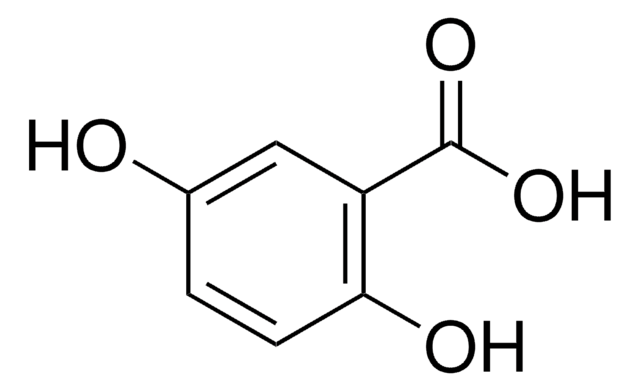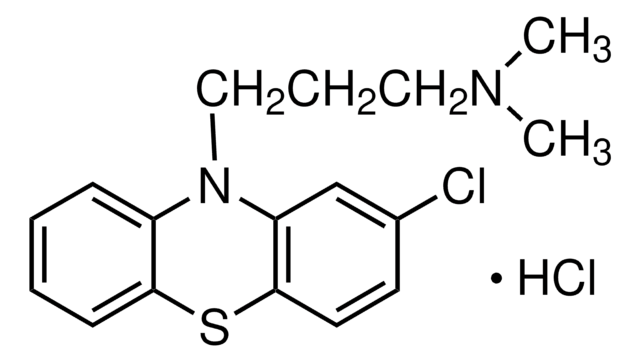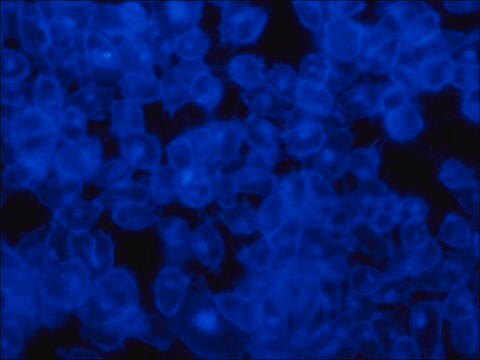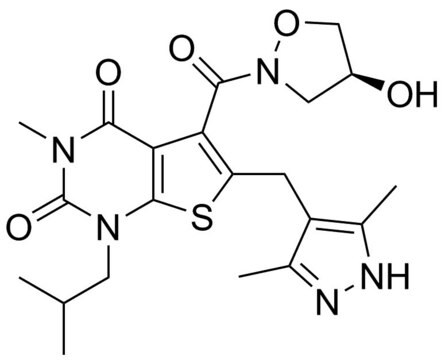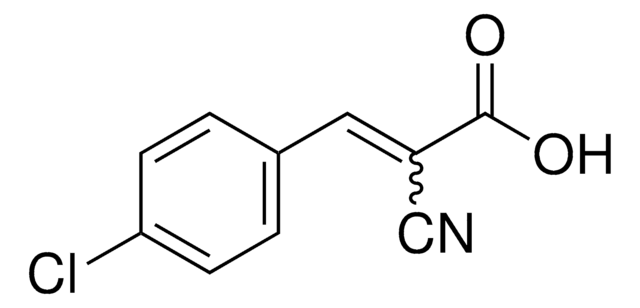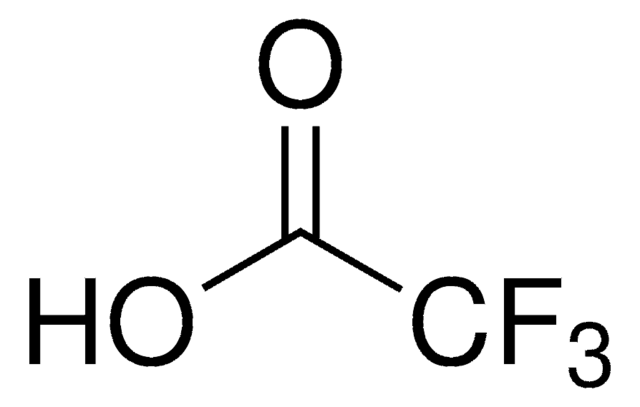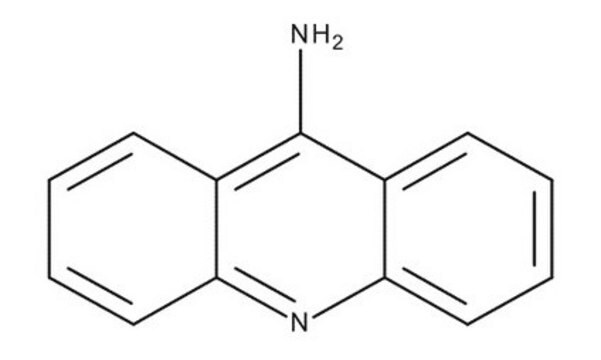C2020
α-Cyano-4-hydroxycinnamic acid
≥98% (TLC), powder, monocarboxylic acid transport inhibitor
Sinonimo/i:
α-CCA, α-CHCA, α-Cyano, 4-HCCA, ACCA
About This Item
Prodotti consigliati
Nome del prodotto
α-Cyano-4-hydroxycinnamic acid, ≥98% (TLC), powder
Livello qualitativo
Saggio
≥98% (TLC)
Stato
powder
Colore
yellow
Punto di fusione
245-250 °C (lit.)
Solubilità
H2O: slightly soluble
methanol: water: soluble
polar organic solvents: soluble
Temperatura di conservazione
2-8°C
Stringa SMILE
OC(=O)\C(=C\c1ccc(O)cc1)C#N
InChI
1S/C10H7NO3/c11-6-8(10(13)14)5-7-1-3-9(12)4-2-7/h1-5,12H,(H,13,14)/b8-5+
AFVLVVWMAFSXCK-VMPITWQZSA-N
Cerchi prodotti simili? Visita Guida al confronto tra prodotti
Applicazioni
Azioni biochim/fisiol
Avvertenze
Warning
Indicazioni di pericolo
Consigli di prudenza
Classi di pericolo
Skin Sens. 1B
Codice della classe di stoccaggio
11 - Combustible Solids
Classe di pericolosità dell'acqua (WGK)
WGK 3
Punto d’infiammabilità (°F)
Not applicable
Punto d’infiammabilità (°C)
Not applicable
Dispositivi di protezione individuale
dust mask type N95 (US), Eyeshields, Gloves
Scegli una delle versioni più recenti:
Possiedi già questo prodotto?
I documenti relativi ai prodotti acquistati recentemente sono disponibili nell’Archivio dei documenti.
I clienti hanno visto anche
Articoli
We presents an article about the Warburg effect, and how it is the enhanced conversion of glucose to lactate observed in tumor cells, even in the presence of normal levels of oxygen. Otto Heinrich Warburg demonstrated in 1924 that cancer cells show an increased dependence on glycolysis to meet their energy needs, regardless of whether they were well-oxygenated or not.
Il team dei nostri ricercatori vanta grande esperienza in tutte le aree della ricerca quali Life Science, scienza dei materiali, sintesi chimica, cromatografia, discipline analitiche, ecc..
Contatta l'Assistenza Tecnica.
